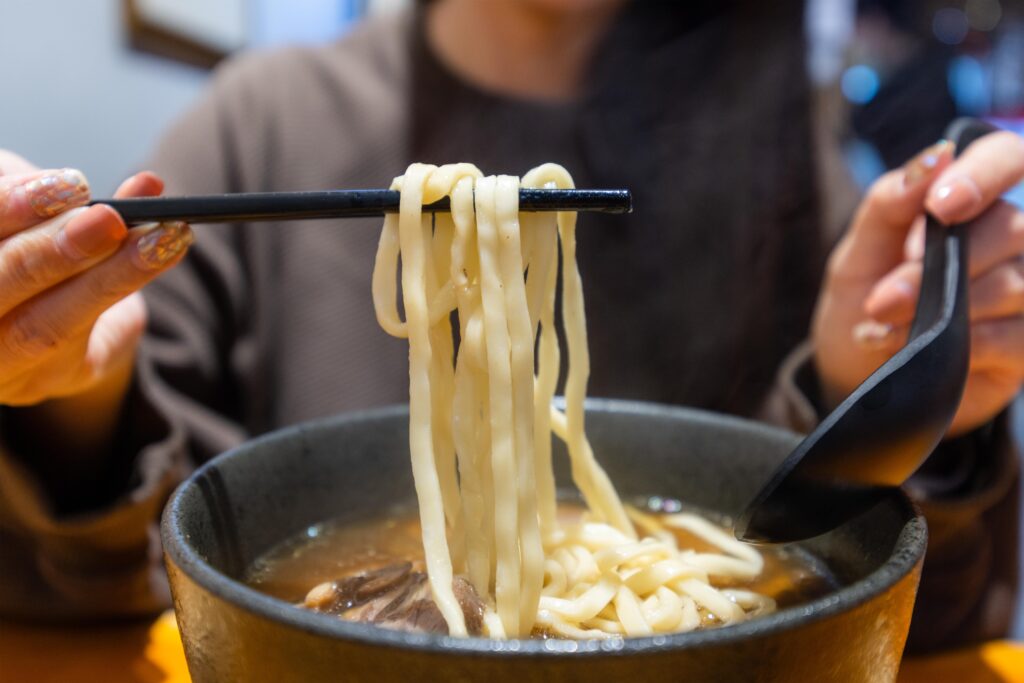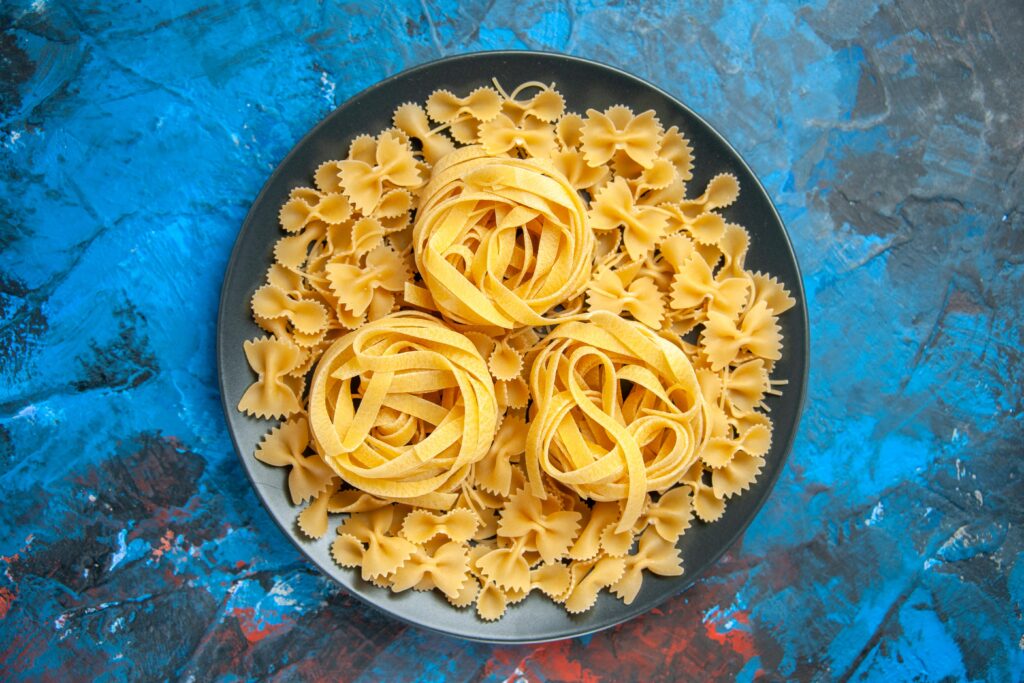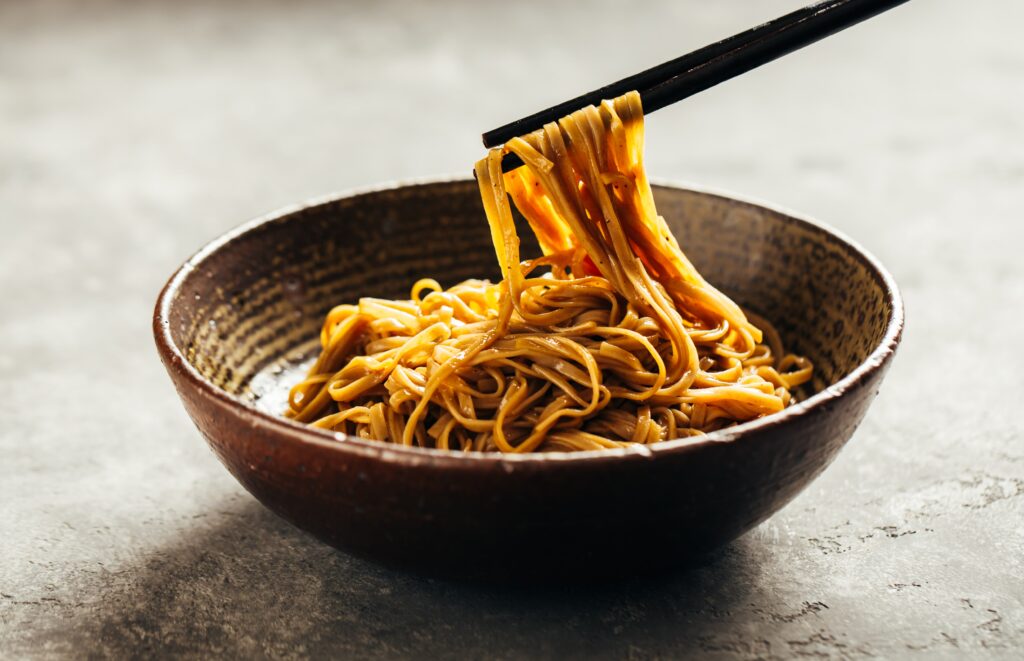In the world of healthy eating, Shirataki noodles have emerged as a popular alternative to traditional pasta. Known for their nutritional benefits and positive impact on health, Shirataki noodles are increasingly being chosen by those looking for a healthier, lower-calorie option.
In this article, we’ll explore the differences between Shirataki noodles and traditional pasta, and why Shirataki noodles might be the best choice for you.
Shirataki noodles, also called “miracle noodles” or “konjac noodles,” are made from the root of the konjac plant, which is native to Asia.

These noodles are mainly composed of water and glucomannan, a soluble fiber that has the ability to absorb large amounts of water, forming a gel that gives the noodles their characteristic texture.
One of the most prominent benefits of Shirataki noodles is their low calorie content. At less than 10 calories per serving, these noodles are a great choice for those looking to lose weight or maintain a healthy weight.
The glucomannan fiber present in noodles helps to increase the feeling of fullness, thus reducing the total food intake.
Glucomannan acts as a prebiotic, promoting the growth of beneficial bacteria in the gut. This improves digestion and helps regulate intestinal transit, preventing constipation.
In addition, the soluble fiber in Shirataki noodles can help lower cholesterol levels and improve cardiovascular health.
For people with diabetes or those looking to maintain stable blood sugar levels, Shirataki noodles are an ideal choice.
Glucomannan fiber slows down the absorption of carbohydrates in the gut, which can prevent glucose spikes after meals.
Traditional pasta is mainly made from wheat, water, and in some cases, eggs. It is a staple food in many cultures and comes in a variety of shapes and sizes.

Although delicious and versatile, traditional pasta is high in calories and carbohydrates, which may not be ideal for all lifestyles.
Traditional pasta is an excellent source of energy due to its high content of complex carbohydrates.
These carbohydrates are slowly broken down in the body, providing a sustained release of energy, which is beneficial for those who engage in intense physical activities.
Pasta made with whole wheat can be a good source of fiber, protein, and various micronutrients such as iron, magnesium, and vitamin B.
These nutrients are essential for various bodily functions, including energy production and nervous system health.
Traditional pasta is incredibly versatile and can be used in a wide range of recipes, from simple pasta dishes with sauce to complex lasagna.
Its ability to absorb flavors makes it a key ingredient in many cuisines around the world.
Shirataki noodles are virtually calorie- and carb-free, while traditional pasta is rich in both.
This difference makes Shirataki noodles a better choice for those looking to lose weight or control their carbohydrate intake.
Although both types of noodles can be a good source of fiber, Shirataki noodles contain glucomannan, a soluble fiber with additional benefits for digestive health. Wholemeal pasta also contains fiber, but in smaller quantities and with different properties.
Traditional pasta, especially enriched varieties and those made with whole wheat, can contain a significant amount of protein.
Shirataki noodles, on the other hand, are virtually protein-free, which can be an important consideration for those looking to balance their macronutrient intake.

Shirataki noodles have a gelatinous texture and a very neutral flavor, which allows them to easily absorb the flavors of sauces and other ingredients.
However, its texture can be a challenge for some, as it is different from that of traditional pasta.
Visit the video for more additional information:
Traditional pasta has a firm texture and flavor that can vary depending on the type of wheat and the ingredients used.
Its ability to maintain an al dente texture makes it popular in a variety of dishes, from cold salads to hot and baked dishes.
In the comparison between Shirataki noodles and traditional pasta, Shirataki noodles stand out as a healthier, lower-calorie option. Their ability to aid in weight management, improve digestive health, and maintain stable blood sugar levels makes them a superior alternative for many people.
If you’re looking for an option that best fits your health and wellness goals, Shirataki noodles are the perfect choice. In addition, in our store, we offer a wide variety of Shirataki products so that you can enjoy all their benefits.
Visit our online store and find out how Shirataki noodles can transform your diet today!